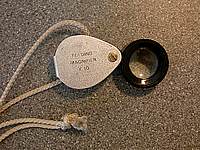Components: organs, characters and states
|
 |
|
 |
|
|
|
|
|
For the purposes of description and identification here the woody bamboo is considered to have 6 major organs, each broken down into components and many characters, each of which has a character state that can be quantified or qualified. The lists of characters are not exclusive or exhaustive, but they should be indicative of the range of variation and terminology that needs to be considered.
Woody bamboos have a primitive unit-based structure, in which each unit is adapted to the function required at that point in the plant, and the units are combined to form organs. The basic unit comprises a section of stem bearing a leaf at a node. Units are joined either in successive fashion along the stem, or in axillary fashion, where a further stem section arises laterally, subtended by the sheath, and borne at the node.
The unitary nature of organ structure is conducive to analysis of ontology and the generation of hypotheses concerning homology of structures and evolutionary pathways. For example, where one form of organ has all the elements of its units present, it can be hypothesized that it is more ancestral than another form in which several elements are missing. This has been applied to both inflorescence and vegetative branching patterns.
If you are serious about identification, then a hand lens, or jeweller’s loupe, is a very useful tool indeed. To check the kind of details given in good close up photos or keys, unaided eyesight is often not sufficient, especially for the smaller, temperate bamboos. The folding type are most pocketable and readily available on eBay. Don’t worry about quality. Even the cheapest ones with plastic lenses make a dramatic difference, especially for older eyes. A magnification of x10 is perfect for seeing bamboo details. loupe, is a very useful tool indeed. To check the kind of details given in good close up photos or keys, unaided eyesight is often not sufficient, especially for the smaller, temperate bamboos. The folding type are most pocketable and readily available on eBay. Don’t worry about quality. Even the cheapest ones with plastic lenses make a dramatic difference, especially for older eyes. A magnification of x10 is perfect for seeing bamboo details.
|

